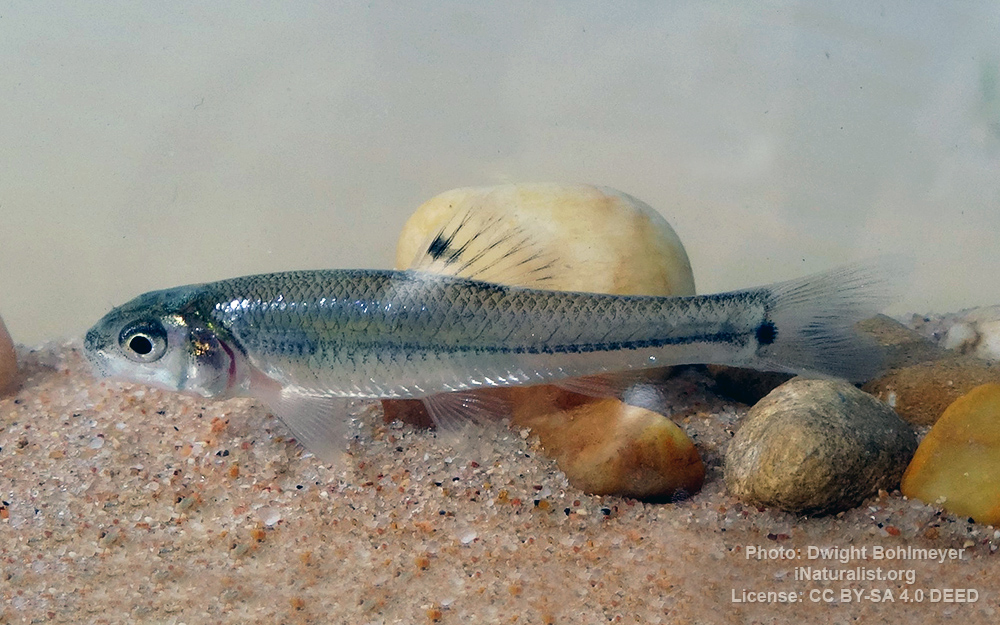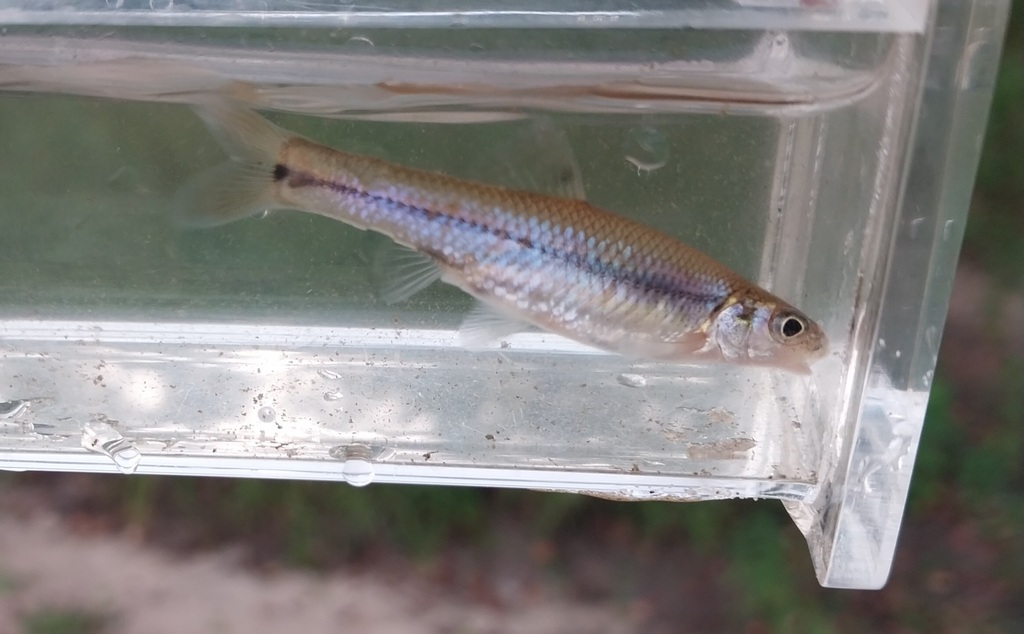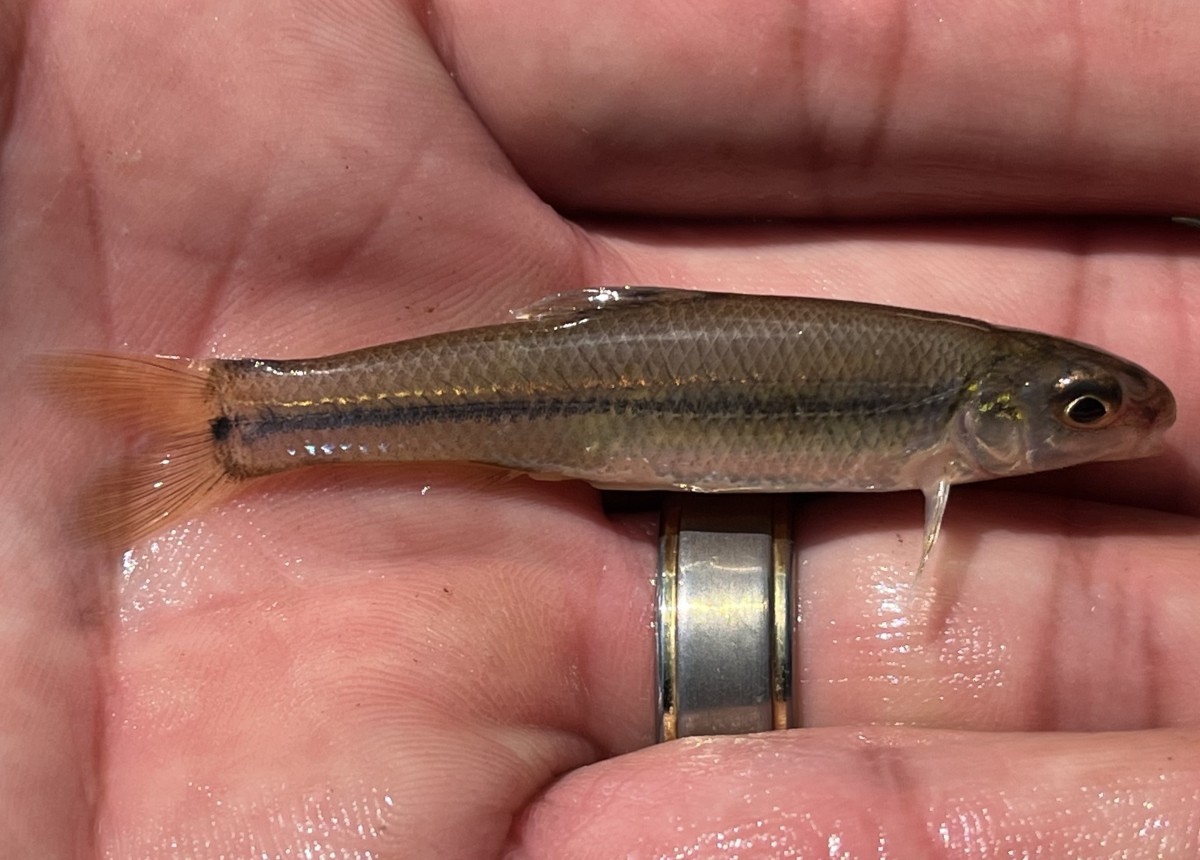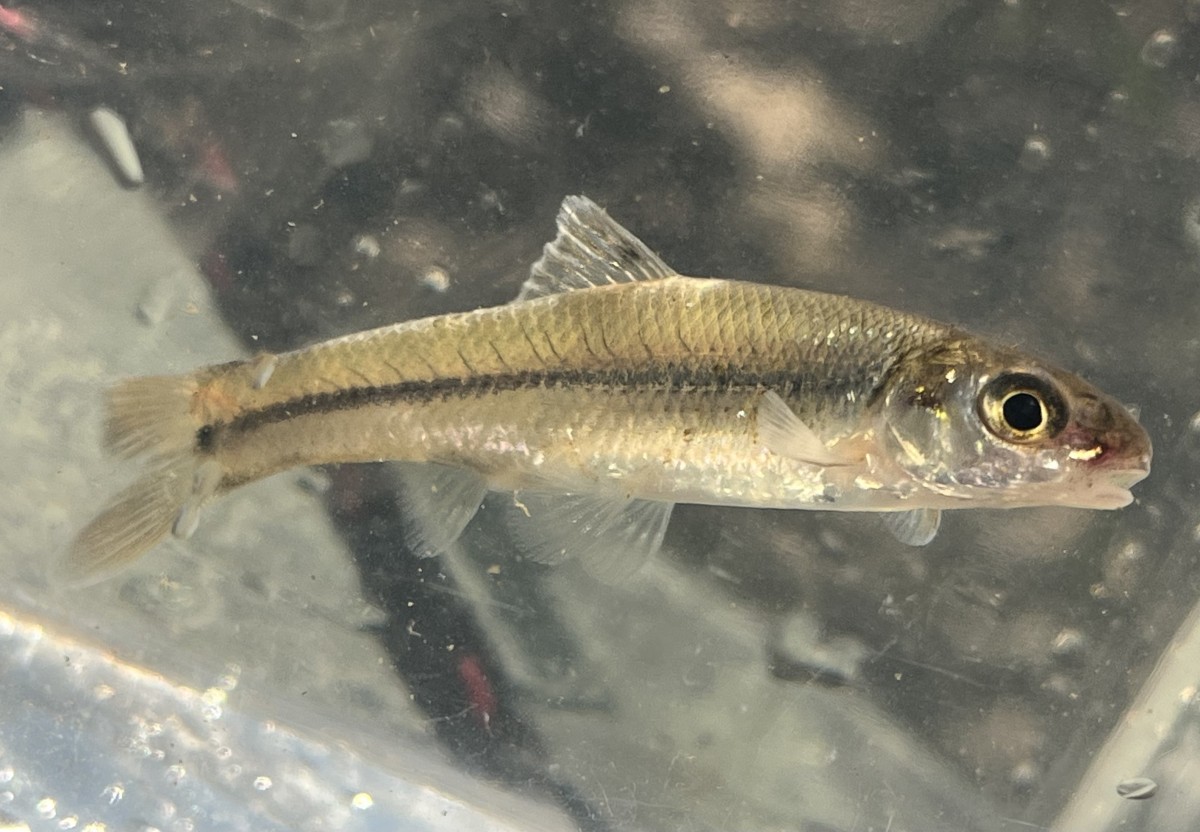Bullhead minnow
(Pimephales vigilax)

Image source: Dwight Bohlmeyer | inaturalist.org
Classification
General data
The bullhead minnow (Pimephales vigilax) is a species of freshwater demersal fish, native to the Mississippi River system in the United States, Gulf Slope drainages from Mobile Bay in Georgia and Alabama to Rio Grande in Texas and New Mexico, USA and northern Mexico, also to tributaries of Lake Huron and Lake Michigan.
The bullhead minnow is cylindrical and small in size, with an average length of 5.7 centimetres (2.2 in) and a maximum length of 9.2 centimetres (3.6 in).
The males of the species are dark in color, brown, olive, or tan, with two light colored vertical lines down their side, while the females are plain in comparison.
The snout is rounded. There are eight total pharyngeal teeth distributed equally bilaterally.
There is a dark spot present on the anterior dorsal fin.
The tail is forked with rounded ends, with a dark spot present at the base at the level of the lateral line.
The single dorsal fin contains eight rays, with a dark spot present anteriorly and no spine. The anal fin contains seven rays with no spine, pelvic fins are abdominal and no adipose fin is present. The pectoral fins have a dark leading edge. The lateral line dips anteriorly.
The bullhead minnow is mainly located in the southern United States, in the Gulf Coast of the United States and Mississippi River Basin. It can be found in the basin of the Mobile River, as well as connected backwaters, streams and rivers. They are found more often in waters that typically have little to no movement, such as in river pools.
They have been introduced to the Osage River and Kansas River systems in Kansas, to the Missouri in Nebraska, the Rio Grande in New Mexico, Lake St Marys in Ohio, the James drainage in South Dakota, the Red River, Canadian River and Rio Grande in Texas and to the upper Fox River and possibly the Menomonee River in Wisconsin.
They were probably introduced to these areas as bait fish carried by anglers. It has also been introduced to Utah where it occurs in two closed drainages within the Great Basin, that of the Sevier River, where it seems to have been introduced accidentally in releases of channel catfish (Ictalurus punctatus) imported from Texas in the 1950s, and of Lake Utah.















